Kota Dussehra Mela – History, Highlights, Attractions & Travel Guide
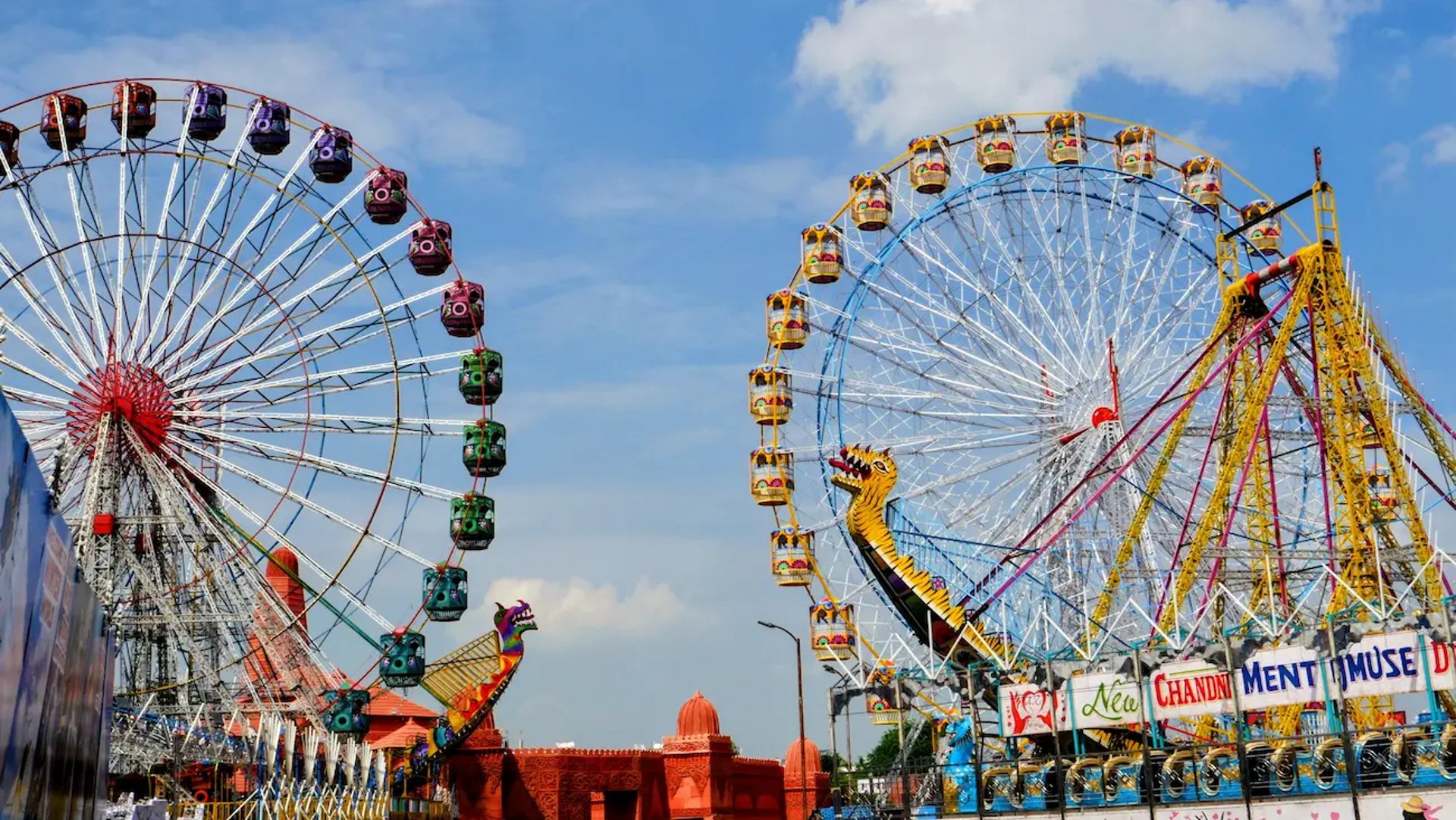
Kota Dussehra Mela – Where History, Culture & Festivity Come Alive
From towering Ravana effigies to vibrant cultural nights, discover why Kota Dussehra Mela is one of Rajasthan’s most unforgettable festivals.
Kota Dussehra Mela – Where History Meets Festivity
Every year in October, as the festive air of Navratri lights up homes across India, the spirit of Dussehra—also known as Vijayadashami—reminds us of the eternal victory of good over evil. From Mysuru’s royal parades to Kullu’s folk celebrations, each region adds its own flavor to this festival. Yet, one city in Rajasthan stands out for its grandeur and scale—the Kota Dussehra Mela.
Unlike most places where Dussehra is celebrated for a single day, Kota transforms into a month-long carnival of devotion, culture, and community celebrations. The mela is counted among the largest fairs in India, attracting lakhs of visitors from across the country. What makes it unique is not just the spectacular Ravan Dahan with towering effigies, but also the blend of cultural processions, devotional events, and vibrant fairground experiences that create an atmosphere unlike anywhere else in Rajasthan.
Updated on: 05th, Oct 2025
Explored on: Oct' 2025
Table of Contents
A Glimpse into the History of Kota Dussehra Mela
The Kota Dussehra Mela holds a special place in the cultural calendar of Rajasthan, with its origins tracing back to 1723 AD, during the reign of Maharao Durjanshal Singh Hada. Back then, the festival began under royal patronage with temple rituals and grand processions that reflected the city’s regal spirit. One unique tradition that started in this period was the Darikhana—a royal gathering of Thikanedaars (chieftains) at the Kota Palace, where leaders and nobles joined in the celebrations.
In its early years, the mela lasted only three days. The effigies of Ravana and his family were modest in size—about 20 to 25 feet tall—but their symbolic destruction carried a powerful message of good triumphing over evil.
Over time, the festival grew in scale and magnificence. Under the rule of Maharao Ummed Singh II (1889–1940 AD), the Dussehra fair transformed into a vibrant cultural spectacle. He introduced a wider range of attractions, performances, and community events, turning what was once a primarily religious celebration into a true people’s carnival.
Today, the Kota Dussehra Mela has evolved into a 25-day-long extravaganza, attracting lakhs of visitors not only from Rajasthan and neighboring states but also from across India and abroad. From a modest three-day tradition to one of the largest Dussehra celebrations in India, Kota’s festival beautifully blends history, devotion, and cultural pride.
Key Festivities of Kota Dussehra Mela
The Kota Dussehra Mela comes alive from the very first day of Navratri with the timeless charm of Ramleela. At the Shree Ram Rangmach in the fairground, the stage becomes a window into the Ramayana. For nine nights, local actors step into the world of Rama, Sita, Hanuman, and Ravana, carrying forward a tradition that feels as fresh today as it did generations ago.
The audience doesn’t just watch—they breathe with the story. Children discover the epic for the first time, elders revisit it with reverence, and in between, voices rise in chants of “Jai Shri Ram”. It’s more than a play; it’s a shared memory unfolding under the festive night sky.
The Enchanting Ramleela Performances
Every October, Kota turns into a living canvas of devotion, drama, and dazzling spectacle. From sacred rituals to grand processions and fiery finales, each festivity tells a story of faith and celebration. Here’s a look at the key highlights that make the Kota Dussehra Mela a festival like no other.
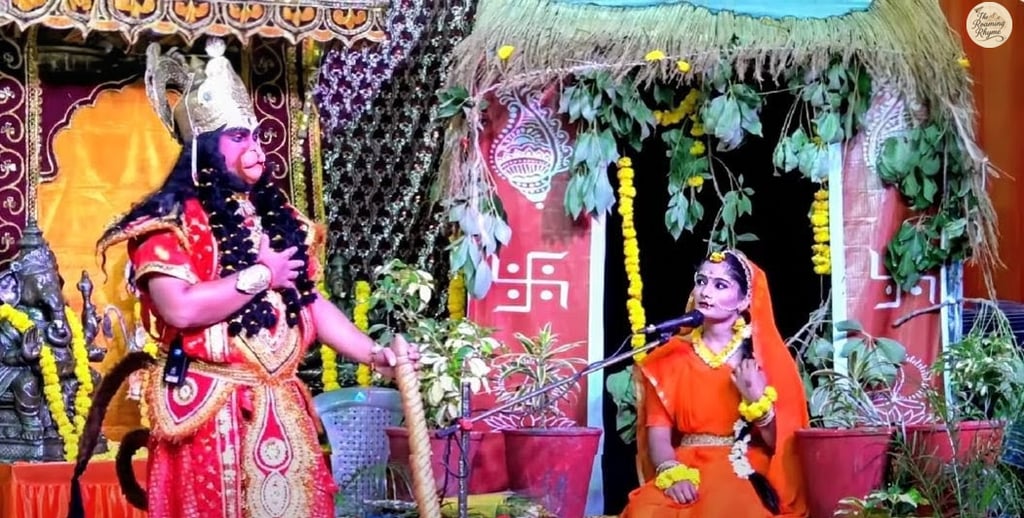

Lord Hanuman’s heartfelt meeting with Mata Sita in Ashok Vatika, beautifully enacted on Shree Ram Rangmanch at Kota Dussehra Mela.
When the Ramleela reaches the moment of Ram Vivah, the celebration steps out of the stage and onto the streets. The city lights up with a grand Ram Baraat—a wedding procession that winds from the heart of Kota all the way to the Dussehra Ground.
It is no ordinary procession. Temple tableaux roll past, musical bands fill the air, and martial artistry shines in the Gatka performance by Sikh men. Yet, what truly sets this baraat apart is the traditional “Jhalawar Bindori”— an age-old folk dance of Jhalawar, performed especially by the groom’s sisters, cousins, and women from the family to celebrate a wedding, echoing joy much like the Garba of Navratri. The circle of dancers, their laughter, their rhythm, turns the streets into a festival of kinship.
Adding to the spectacle is the Kacchi Ghodi dance, a vibrant folk art from Shekhawati. Performers, mounted on decorated bamboo horses, move to the pounding beats of dhol and thali. Their mock sword fights and spear play bring alive stories of courage, while a singer’s voice narrates tales of warriors and wandering bandits.
The Raam Baraat is more than a procession—it is the city itself becoming a part of Ram’s wedding, where tradition and theatre merge into a living festival.
The Grand Ram Baraat Procession
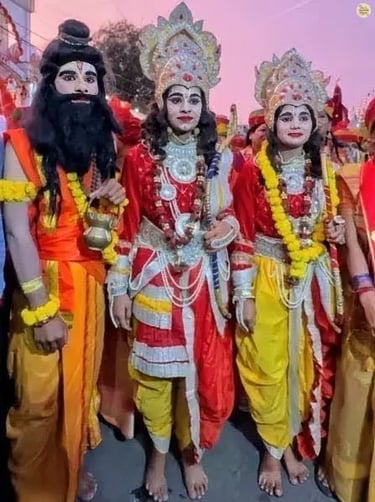

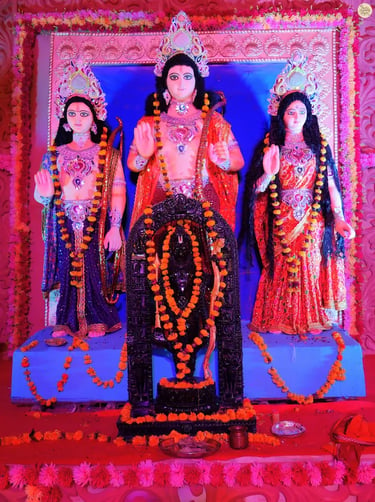

Ram, Laxman, and Sita idols crafted by Bengali artists grace the Ram Baraat.
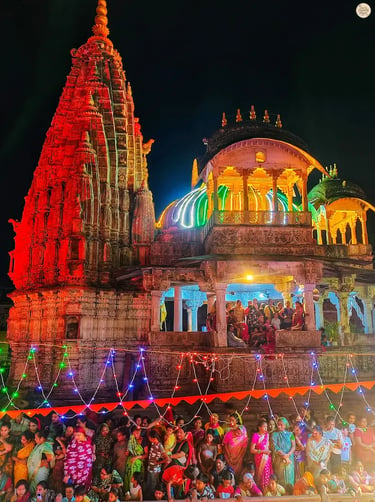

Women watch the divine Ram Baraat from the temple’s shade.
Grand Ram Baraat featuring Lord Ram, Laxman, and Maharishi Vishvamitra.
The Sacred Laxmi Narayan Shobhayatra
Vijayadashami in Kota is more than just the day of Ravana’s fall—it is the living reminder of truth triumphing over evil, carried through centuries of tradition. On this day, the Darikhana ceremony takes place at the majestic Garh Palace. Here, the royal family and the landlords of the Hadoti region gather in traditional attire, exchanging Dussehra greetings in an atmosphere that feels both regal and rooted.
From the palace’s women’s quarters comes a rare sight: the Lakshminath Temple, usually closed to men, opens its doors for a single day. Worship is offered, and then the grand Laxmi Narayan Shobhayatra begins. Members of the royal family mount elephants, symbolizing their role as representatives of Lord Lakshminath. Behind them, the procession unfolds—a striking mix of devotion, heritage, and spectacle.
The journey moves from Garh Palace through the city to the Dussehra grounds. Along the way, horses, camel carts, and decorated tableaux bring myth to life. The clash of Rama and Ravana’s armies is recreated with vigor: demons ride horses, the monkey army fights with maces, and Goddess Kalika appears in her fierce form. Lord Rama, Lakshman, Hanuman, Sugriv, Angad, Vibhishan, Ravana, and Meghnad—all step out of the epic into the streets of Kota.
Adding to the spectacle are the vibrant performances of local tribes—Sahariya, Kanjar, Kajri, and Bhil—their songs and dances echoing the cultural heartbeat of Hadoti. From far corners of India too, folk traditions travel to join the celebration. Bengal’s Chhau dance and Kerala’s Kummatti Kali dance captivate the crowds, blending martial grace with storytelling.
The sounds complete the scene: war drums thunder from camel carts, traditional bands play the rhythm of battle, saffron flags wave high in the hands of the monkey army from Godavari Dham, while a spirited pipe band from Punjab lifts the energy to its peak.
The Laxmi Narayan Shobhayatra is not just a procession—it is history in motion, a city marching with its past and present, culminating in the fiery moment of Ravana Dahan, when effigies of Ravana, Kumbhakaran, and Meghnad fall to flames under the night sky.
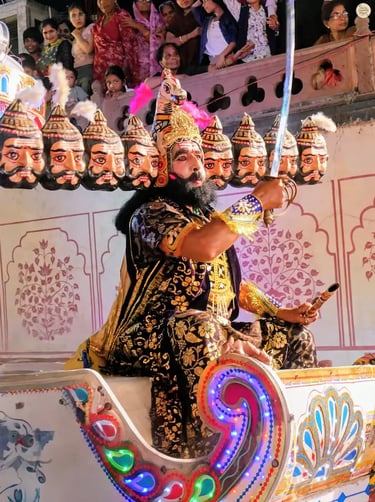

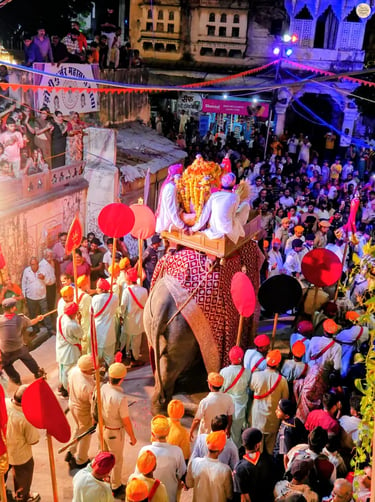

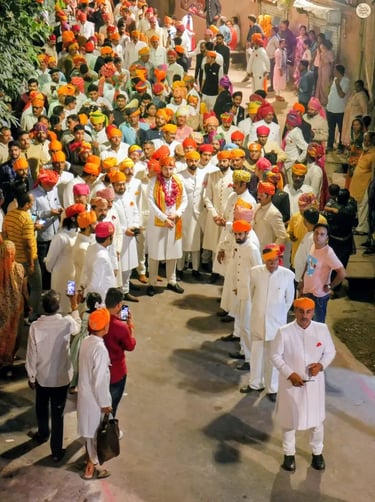

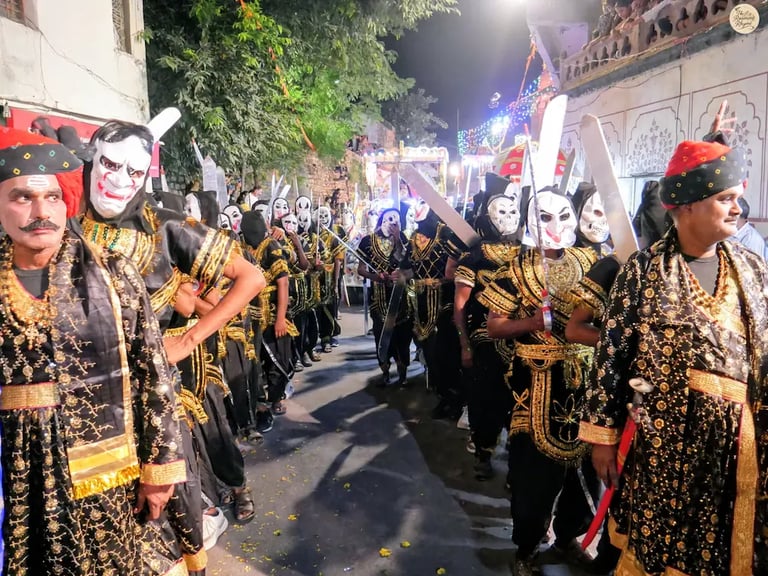

Ten-headed Ravana comes alive in Laxmi Narayan Shobhayatra.
Laxmi Narayan Shobhayatra – Lord Lakshminath rides majestically on an elephant.
Royal presence at Laxmi Narayan Shobhayatra – Maharao of Bundi with Hadoti landlords.
Children dressed as demons march as Ravana’s army.
The Spectacular Ravana Dahan
The most awaited moment of the Kota Dussehra Mela is the burning of the giant effigies of Ravana, Kumbhkaran, and Meghnad. As evening sets in, the fairground fills with excitement. Families sit together, children climb on shoulders to get a better view, and vendors move through the crowd selling popcorn, glowing sticks, and toys.
When the chief guest—often a royal family member or dignitary—fires the flaming arrow, the atmosphere changes. The first arrow finds its mark on Kumbhkaran. The giant effigy trembles, crackers roar, and sparks light up the night. Soon after, Meghnad follows, his figure bursting into flames as the crowd cheers louder. And then, the moment everyone waits for—Ravana, the ten-headed king, rises in fire.
This is no ordinary burning. Kota’s Ravana is a marvel in itself. A wheel of spinning firecrackers blazes in his hand like a weapon of flame. His ten heads ignite one after another, each exploding in light before falling to ashes. His painted eyes blink with sparks, his swords swing with bursts of fireworks, and his towering crown shoots sky-shooter rockets into the heavens. From his mouth, fiery sparks pour out like he is breathing his last in flames. From his belly, blue sparks burst forth, painting the darkness with strange light. Every crackle, every spark makes the figure feel alive—fighting, raging, and finally surrendering.
This tradition has grown bigger every year. Long ago, the effigies were just 20–25 feet tall. In 2022, a 75-foot Ravana with 3D effects amazed the crowd. In 2024, the height reached 80 feet with even more dazzling fireworks. But the historic moment came in 2025, during the 132nd National Dussehra Fair, when Kota set a record by burning a 221-foot Ravana—the tallest in the world. Lakhs of visitors witnessed this once-in-a-lifetime sight.
Watching Ravana burn in Kota is an unforgettable experience. The mix of fire, fireworks, and the cheer of the crowd gives you goosebumps. It is the true highlight of the mela, where faith, tradition, and celebration come together in one spectacular moment.
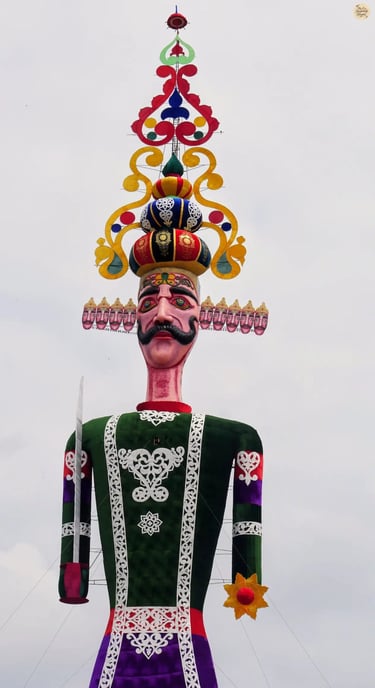

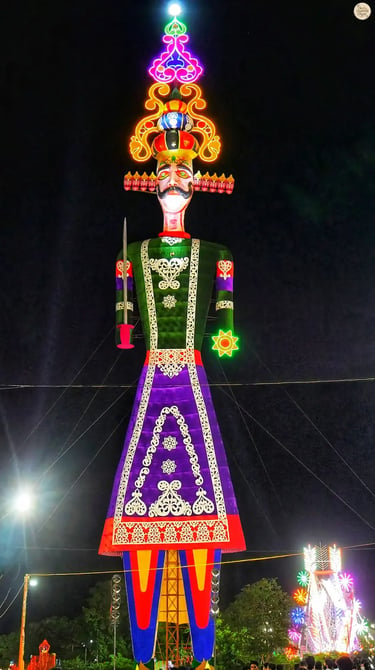

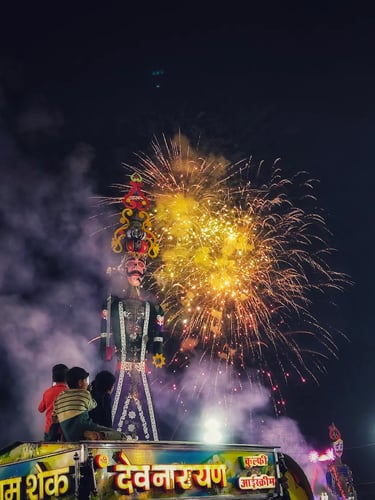

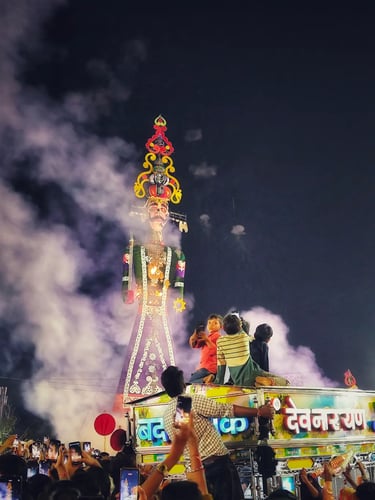

Majestic ten-headed Ravana effigy stands proudly at Kota Dussehra ground
World’s tallest effigy of Ravana at Kota Dussehra Mela, glowing with grandeur before the final blaze of triumph.
When Ravana burns, the sky blooms in fire and glory.
Ravana’s effigy in flames at Kota Dussehra, marking the fall of arrogance and rise of righteousness.
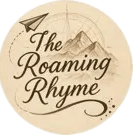

When October lights the skies so bright,
Kota awakens in festive light,
Ravana burns in fiery might,
Good wins again beneath starry night.
Ramleela echoes through the air,
Shobhayatra’s faith beyond compare,
Drums and chants in rhythmic chime,
Old tales breathe in modern time.
Songs and laughter fill the ground,
Where hearts unite in joy profound,
Turban pride and long hair shine,
Each contest tells a local sign.
Rides that whirl and sweets that gleam,
Shops that glow like a living dream,
And as the night fades into time,
The city hums — the roaming rhyme.
Cultural Nights and Celebrity Performances
Every evening, the Vijayshree Rangmach at Kota Dussehra Mela comes alive with music, poetry, and dance. From traditional folk performances to star-studded celebrity nights, the stage becomes a meeting point of heritage and glamour, keeping the crowds spellbound till late hours.
Every night carries a different mood:
Cine Sandhya brings Bollywood’s shine to Kota, with film stars and singers lighting up the stage, turning the mela ground into a glamorous concert.
All India Hindi & Rajasthani Kavi Sammelan, along with soulful Mushairas, bring words to life—poems filled with humor, satire, romance, and emotion echo through the crowd, reminding everyone that literature still holds its magic.
Bhajan Sandhya and Qawwali Nights paint the evenings with devotion and sufi spirit. Bhajans soothe the heart, while qawwalis raise the energy, drawing the entire audience into rhythm.
Sindhi Cultural Programs showcase folk songs and traditions, adding another vibrant color to Kota’s cultural fabric.
Rajasthani Folk Music & Dance take center stage with graceful Ghoomar, swirling Kalbelia, and the haunting tunes of desert instruments, bringing Rajasthan’s soul alive in every beat.
Punjabi and Bhojpuri Nights shake the ground with high-energy songs and dances that keep the crowd on its feet till late hours.
Evenings like Ek Shaam Shaheedon ke Naam and Ghazal Sandhya offer moments of reflection—honoring martyrs or celebrating the timeless romance of ghazals.
Every performance at Vijayshree Rangmach turns the mela into more than a fair. Together, these nights make Kota Dussehra a carnival of faith, art, literature, music, and joy, where every evening feels like a new story unfolding under the stars.
The Festive Buzz: Shows, Competitions & Cultural Magic
Kota Dussehra is not just about towering effigies and fire—it is also about the laughter, melodies, and cultural spark that keep the celebrations alive long after the flames fade.


Lights, music, and magic fill Vijayshree Rangmanch.
Crowd-Pulling Competitions and Fun Contests
At Kota Dussehra, the fun isn’t just on stage or in processions—it comes alive at the Kisan Rangmanch at the Mela Ground, where all the exciting and unusual competitions take place. People laugh, cheer, and jostle for the best view as participants show their skill, strength, and creativity.
Some of the popular events include:
Famous Moustache Competition – Men show off everything from classic styles to creative, jaw-dropping designs. The crowd cheers as each participant struts their look.
Chambal Kesri Wrestling Contest – Wrestlers display strength and skill, keeping everyone at the edge of their seats.
Turban Tying Competition – Men twist colorful turbans with speed and precision, showing skill, style, and tradition in every fold.
Long Hair Competition – Women showcase their long, flowing hair, carefully braided, twisted, or styled in creative ways. The crowd admires not just the length but the patience, skill, and beauty on display. It’s a celebration of tradition, pride, and individuality all rolled into one.
Rangoli and Mandana Competition – Artists create bright and detailed patterns, turning the fairground into a living canvas.
Longest and Shortest Men & Women Competition – Fun and playful, this contest brings smiles and laughter as participants of all sizes take the spotlight.
Every competition is a festival within the festival. From cheering crowds to excited participants, these events bring joy, energy, and a sense of community, making the Kota Dussehra fairground lively and unforgettable.
From Shopping Sprees to Thrilling Rides & Tasty Bites
Step into the bustling fairgrounds of Kota Dussehra Mela, where vibrant shopping stalls tempt you with handicrafts, toys, and festive souvenirs. The air is filled with the aroma of spicy chaats, sizzling pakoras, and sweets, while giant wheels, merry-go-rounds, and thrilling rides add an extra dose of excitement for families and kids alike.
Colors, Crafts & Keepsakes
Walk through the colorful shopping streets of the Kota Dussehra Mela, where every corner glows with art, rhythm, and tradition. Stalls brim with Kota Doria sarees, Bandhani sarees, and lac bangles that catch the light like tiny sparks of Rajasthan. The gentle clink of jewelry, the soft rustle of handloom fabrics, and the scent of clay pottery fill the air with an old-world charm.
Each shop feels like a storyteller—offering pottery painted by hand, embroidered dupattas, home décor pieces, and everyday treasures made with love and skill. From Rajasthani handicrafts to playful toys and glittering trinkets, shopping here isn’t just buying—it’s collecting memories.
The shopping at Kota Dussehra Mela is where craft meets culture, where colors dance under the festive lights, and where every keepsake carries a little piece of Rajasthan’s heart.
Flavors of the Fair
The Kota Dussehra Mela is not just a feast for the eyes—it’s a feast for the taste buds too. The entire fairground turns into a food lover’s paradise, bringing together Kota’s most popular snacks, Rajasthani delicacies, and flavors from across India—all in one place.
The star of the food zone is Nasirabad ka Kachora, a spicy and crispy treat that pulls crowds from every corner. While Kota is famous for its kachori, this kachora steals the spotlight with its unique twist. Another crowd favorite is Pannalal Pakoriwala, known for its legendary gobhi pakoras that are simply unmatched in taste.
For those craving authentic Rajasthani flavor, Shekhawati Dhaba serves the classic dal-bati-churma—rich, rustic, and full of tradition. Head to Amar Punjabi Dhaba for hearty North Indian and Punjabi dishes that fill the air with mouth-watering aromas.
And then comes the sweetest part—the desserts! From Doodhiya Kheench to Hathi Jaam and Kaala Jaam, the mela offers traditional treats that melt in your mouth. Don’t miss the Softy Stalls scattered around the fairground—each one a nostalgic reminder of the 90s, when Kota locals enjoyed the same softy after evening strolls at the Chambal Garden.
To top it off, handmade Fruit Cream and Matka Kulfi add a cool, creamy finish to your food trail. With every bite, the Kota Dussehra Mela serves not just food—but memories, flavor, and a taste of Rajasthan’s joyful spirit.
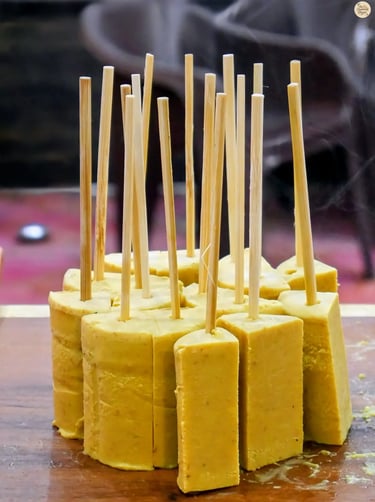

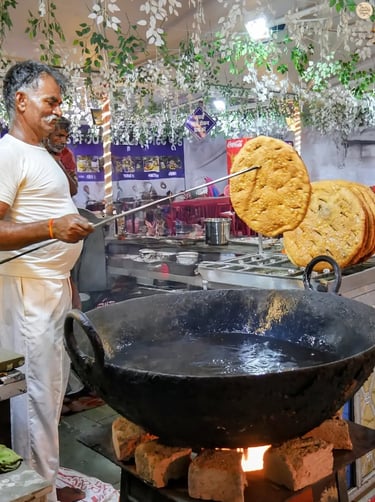

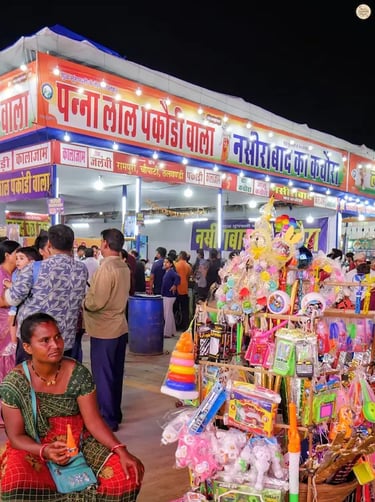

Ujjain’s Matka Kulfi delight at Kota Dussehra.
Hot and crispy Nasirabad ka Kachora being freshly fried at Kota Dussehra Mela.
Iconic Pannalal Pakoriwala stall at Kota Dussehra.
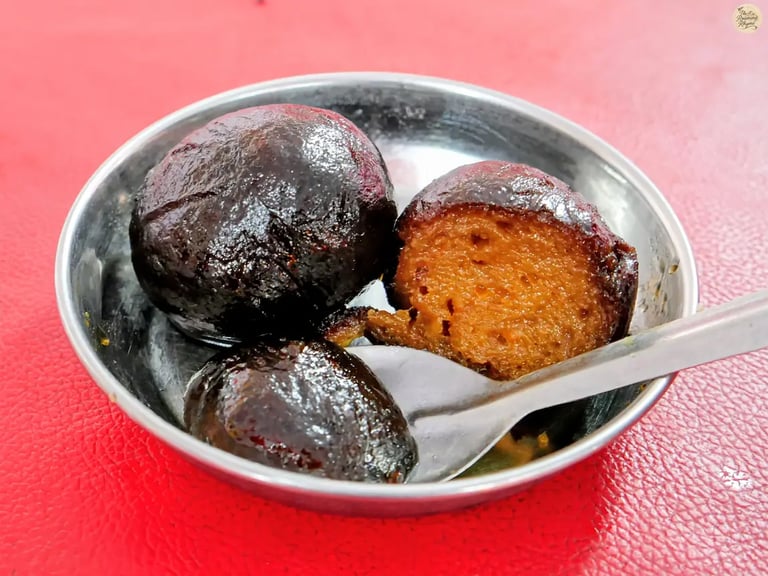

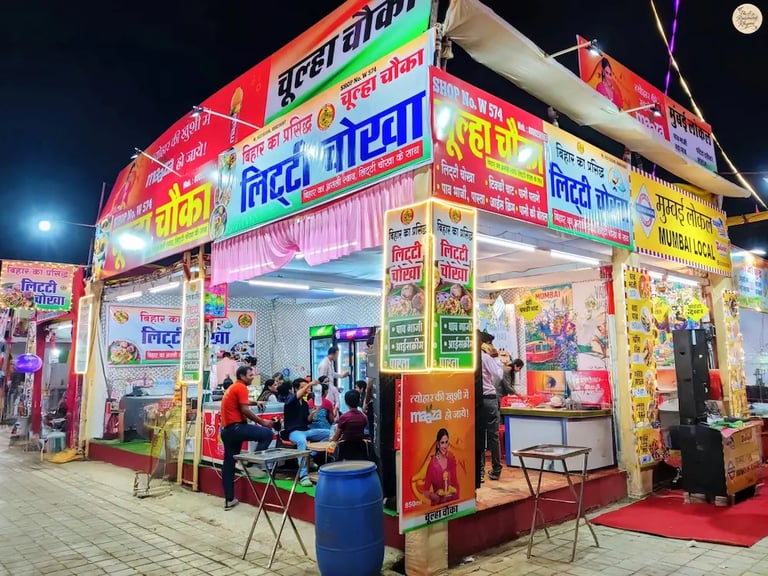

Sweet delight: Hathijam at Kota Dussehra Mela.
Flavors from every corner meet at Kota Dussehra Mela.
Rides that Light Up the Mela
Beyond the colorful stalls and delicious street food, the Kota Dussehra Mela turns into a dazzling playground of fun and thrill. The fairground lights up with glowing Ferris wheels, swirling merry-go-rounds, giant jhulas, and thrilling mini roller coasters that fill the air with laughter and excitement.
As night falls, the shining Ferris wheel against the Kota sky becomes an unforgettable sight—its lights spinning like stars, mirrored in the eyes of every visitor. Families stroll through the fairground, children squeal with joy, and music floats through the festive air.
Adding to the excitement is the heart-stopping Maut ka Kuaan—the legendary Well of Death. Here, daredevil bikers ride inside a giant wooden cylinder at dizzying speed, defying gravity as the crowd gasps in awe. The roar of engines, the smell of smoke, and the cheers of the audience make it one of the most thrilling moments of the mela.
And when you need a breather, the circus acts, magic shows, and old bioscope films bring back the charm of vintage fairs. From rides that spin to stunts that stun, this part of the Kota Dussehra Mela captures pure joy and timeless wonder—a carnival of thrill, laughter, and unforgettable memories.
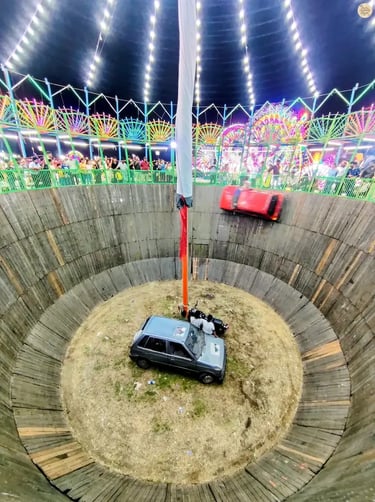

Thrilling Maut ka Kuaan act with cars speeding on vertical walls
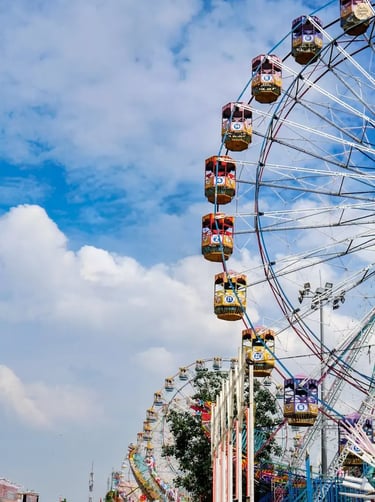

The vibrant fairgrounds come alive with giant wheels, even in the calm of the morning.
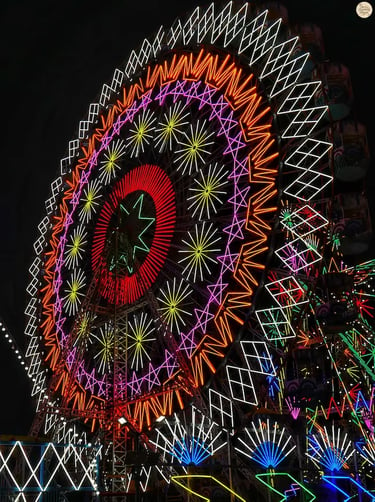

Glowing giant wheel lights up at Kota Dussehra Mela.
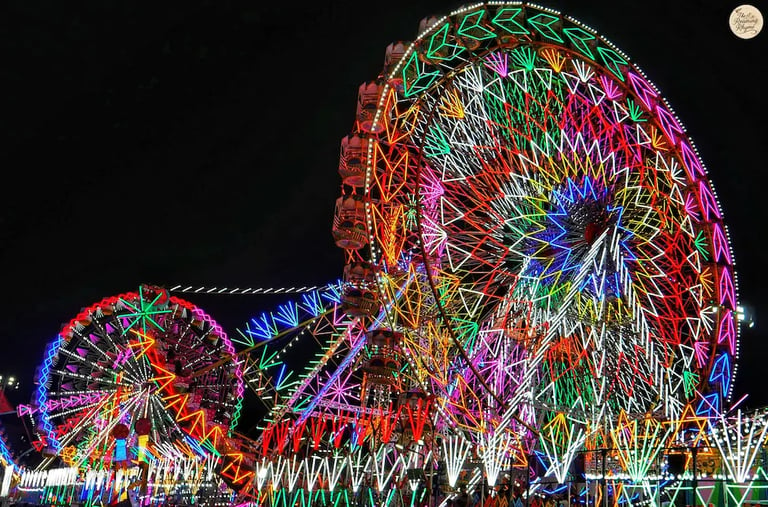

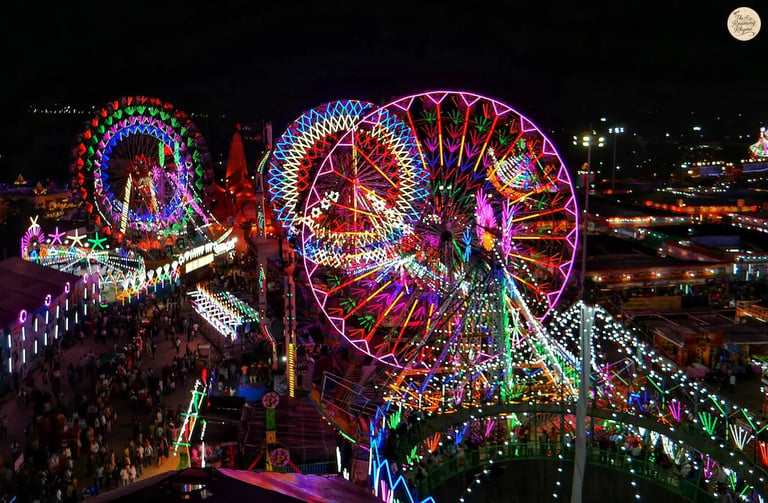

The night carnival spirit shines bright with glowing rides and festive lights at Kota Dussehra Mela.
The night sky sparkles with glowing wheels and rides in this breathtaking aerial view.
Every stall, every ride, every bite tells a story, painting the fairground in colors, lights, and laughter. From the thrill of Maut ka Kuaan to the sweet nostalgia of softy, Kota Dussehra turns every moment into a memory.
Kota Dussehra is not just a festival—it is a journey of sights, sounds, and flavors, a place where devotion and delight meet in perfect harmony. It invites travelers to lose themselves in the rhythm of the mela, tracing the path unknown, letting curiosity guide every turn. From the echoing chants of Ramleela to the thrill of rides, from the sparkle of handicrafts to the taste of sweet delights, every moment is a story, every step a memory.
Here, tradition dances with modern joy, and every face in the crowd carries the glow of shared celebration. Walking through the fairgrounds, you feel the heartbeat of a city that has celebrated its heritage for centuries, yet still surprises with new wonders each year.
In every laugh, every cheer, and every flicker of fire, the city hums its timeless song. Here, under the October sky, every visitor becomes part of the story, moving with the pulse of the roaming rhyme, carrying the spirit of Kota Dussehra long after the fair ends.
Frequently Asked Questions – Kota Dussehra Mela
Q. Which is the best Dussehra in Rajasthan?
A. Kota National Dussehra Fair is the grandest in Rajasthan, famed for towering Ravana effigies, cultural shows, and vibrant Ramleela performances.
Q. What to expect at Kota Dussehra Mela?
A. Expect colorful cultural programs, lively processions, Ramleela, thrilling rides, delicious food, and the spectacular Ravana burning.
Q. What is the best time to visit Kota Dussehra Mela?
A. Visit after sunset, when the fairground glows, rides sparkle, and Vijayshree Rangmach comes alive with music and dance.
Q. Is there parking at Kota Dussehra Mela?
A. Yes, local authorities provide ample parking for 2-wheelers and 4-wheelers at multiple entry points.
Q. How much time is needed to explore Kota Dussehra Mela?
A. Spend 2–3 hours to enjoy rides, shop, and taste local treats—but time flies in the roaming rhyme of the fair.
Q. What to eat at Kota Dussehra Mela?
A. Don’t miss Nasirabad ka Kachora, Pannalal Pakoriwala, Hathijaam, Softy, Rabri Malpuaa, and other Rajasthani delights.
Q. Is there an entry fee for Kota Dussehra Mela?
A. No entry fee is required; you only pay for rides, shows, and exhibitions inside the fairground.
Q. Which is the tallest Ravana in the world?
A. Kota holds the record with a 221-foot Ravana effigy, set during the 2025 Dussehra Mela.
Q. What to buy at Kota Dussehra Mela?
A. Shop for Kota Doria sarees, lac bangles, hand-painted pottery, embroidered dupattas, traditional jewelry, toys, and spices.
Q. How long is Kota Dussehra Mela?
A. Kota Dussehra Mela starts from Vijayadashami and continues until Dhanteras, lasting around 20 days of festive fun, cultural programs, and celebrations.
Share Your Thoughts – We’d Love to Hear From You!
Every journey is better when shared.
We hope you enjoyed this travel story — now, we'd love to hear yours! Share your experience, suggestions, or feedback and help us make our travel tales even better.
